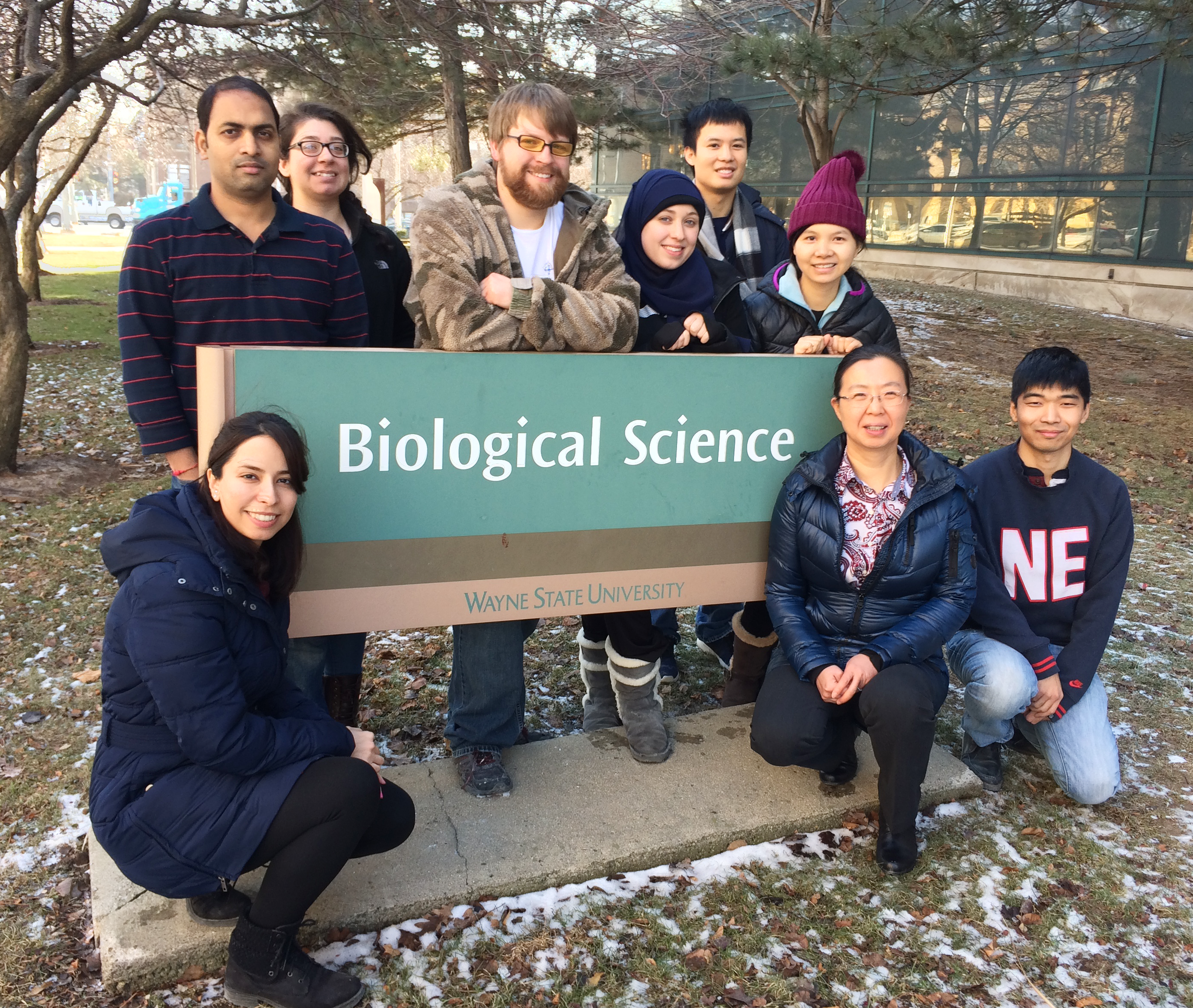Research Summary
Lab News
 |
Lab Projects
, a dynamic nuclear structure regulating cell apoptosis and tumorigenesis, plays an important role in host anti-viral defense. Upon viral entry, ND10 components converge at the incoming DNA in an attempt to repress the viral genome. Newly synthesized ICP0 is immediately deployed to ND10, where it uses its E3 ubiquitin ligase activity to degrade two ND10 constituents, one of which, promyelocytic leukemia (PML) protein, is the organizer for ND10. The proteasomal degradation of PML triggered by ICP0 leads to the dispersal of ND10 components and the de-repression of viral DNA. My lab has investigated the dynamic interaction between ICP0 and ND10. We found that ICP0 interacts with ND10 via three sequential steps. First, ICP0 docks at the surface of ND10. It then merges into the ND10 body and extensively co-mingles with ND10 components. Finally, after the dispersal of most ND10 components, ICP0 is retained at ND10 for a short period of time before it diffuses throughout the nucleus. We defined the three steps of ICP0-ND10 interaction as ND10 adhesion, ND10 fusion, and ND10 retention (Gu et al., JVI 87:10244-54). We further investigated sequences required for the ND10-fusion process and identified three proline-rich elements that redundantly facilitate the fusion of ICP0 into ND10 (Zheng et al., JVI 89: 4214-26). These findings are the first to reveal the dynamics of recruitment and retention of ICP0 at ND10. One ongoing project in the lab is to delineate the molecular basis of ICP0-ND10 interaction.
ICP0 has a RING-type E3 ubiquitin ligase activity, which is responsible for the proteasomal degradation of several cell regulators including PML. PML has 7 isoforms, all of which are the products of alternative splicing from a single PML gene transcript. We found that ICP0 uses different domains to differentially recognize the individual PML isoforms. The recognition and degradation of PML II relies on the presence of a SUMO-interaction motif (SIM362-364) located in the central region of ICP0 whereas the degradation of PML I depends on a bipartite PML I-interaction domain located at the N-terminal half of ICP0 (Zheng et al., JVI 90:10875-85). These results raise the question of why ICP0 needs to treat its E3 substrates differently. One possibility is that these substrates may play distinctive roles in HSV-1 replication, and therefore ICP0 E3 ligase targets them differently to coordinate a more robust infection. The second major project in the lab is to elucidate the molecular mechanism underlying the distinctive substrate recognition and to understand it impacts on viral pathogenicity and host immunity.
One intriguing phenomenon in HSV-1 infection is the establishment of viral replication compartments at the original ND10 foci after the destruction of ND10 bodies. A few cellular regulatory proteins, such as CoREST and CLOCK, are recruited to ND10 to become a part of the replication compartments during HSV-1 infection. It is very likely that ICP0-ND10 interaction functions not only to degrade PML and release gene repression, but also to exploit the advantageous regulators located within ND10 in order to initiate viral transcription and replication. We are currently conducting affinity purification and mass spectrometry to identify candidates that participate in the stepwise ICP0-ND10 interaction and differential substrate recognition. With the identification of ICP0 interaction network at different phases of HSV-1 infection, we will elucidate the molecular process of ICP0 antagonizing host defenses to establish viral replication.
The detailed functional analysis of ICP0 has called for a better understanding of the ICP0 structure. For example, we found that in PML II degradation by ICP0, the aforementioned SIM362-364 in required for ICP0 to interact and degrade PML II. However, although the presence of SIM362-364 alone is sufficient for ICP0-PML II interaction, the proximal sequences surrounding SIM362-364 and the distal domains located at the C-terminus of ICP0 are both important for an effective degradation of PML II (Zheng et al., JVI 90:10875-85). These results suggest that structural support of SIM362-364 is essential for the regulation on PML degradation. The structural analysis along with the functional dissection currently being conducted in the lab will provide a full picture of the interrelation between ICP0 and host factors. Likely it will become a road map for the strategic design of anti-HSV therapies.